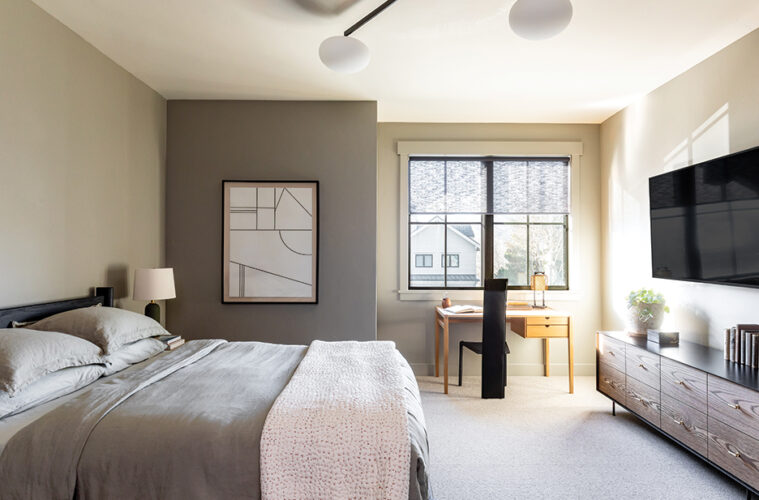If you’re finishing a basement, you may be wondering if installing new carpet is really the best choice. Though it can be less expensive than a hard finish and certainly more cozy, new carpet is typically our last resort when it comes to designing a healthy, sustainable home.
Most carpet is synthetic (typically nylon), meaning it’s made from fossil fuels and contributing to climate change. Synthetic carpet is made of plastic fibers, and its shedding behavior directly contributes to microplastic pollution. Thanks to research over the past few decades, we now know that microplastics are endocrine disruptors, often mimicking estrogen – disrupting our bodily functions and increasing the risk of many cancers. In addition, synthetic carpet almost always ends up in the landfill or worse – is incinerated.
With so many better alternatives out there, we recommend choosing alternative materials for your basement. Hardwood floors with natural fiber rugs (both which can last 100 years or more) are always the most sustainable choice. Where moisture concerns exist, try a cork wood-look flooring, tile, or Marmoleum.
If you can’t avoid carpet, here are 5 things to look for when sourcing:
1. Choose 100% wool.
Wool carpet is made of natural fibers. Inherently stain-resistant, many options come in undyed or Oeko-tex certified – meaning no toxic chemicals were used in the dye process.
2. Make sure it’s made in the USA.
Carpet is heavy. To reduce your carbon footprint, choose a product that’s made as close to home as possible. Look at the width of the roll – most carpet made in the USA comes in 12 feet, while 13 feet is usually from overseas.
3. Look for monomaterials.
You may have selected 100% wool carpet, but turn your sample over and you might find a synthetic backing. Instead, look for a carpet with a natural backing (easier to find than you might think – and able to biodegrade along with the wool).
4. Avoid VOCs.
That “new carpet smell” is actually the off-gassing of VOCs (volatile organic compounds) – carcinogenic air-borne chemicals. Do yourself a favor and choose a natural carpet, ideally with a Greenguard certification.
5. Don’t forget the carpet pad!
If your vendor offers a wool carpet pad, that is your best option – but many suppliers don’t. If synthetic is your only choice, ask for the MSDS (Material Safety Data Sheet) which should list VOC levels and potential health risks.
From a-la-carte consultations to turn-key design, we can help you create a healthier, more sustainable home. Scan the QR code to find out more.
Have a question you want to see answered here? Send us an email at inquiries@annabode.com.



